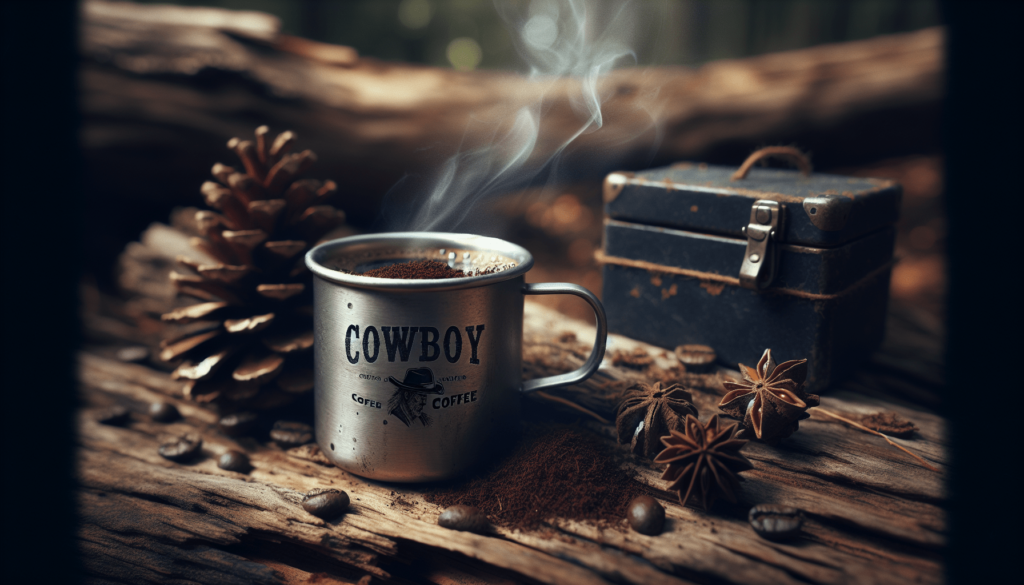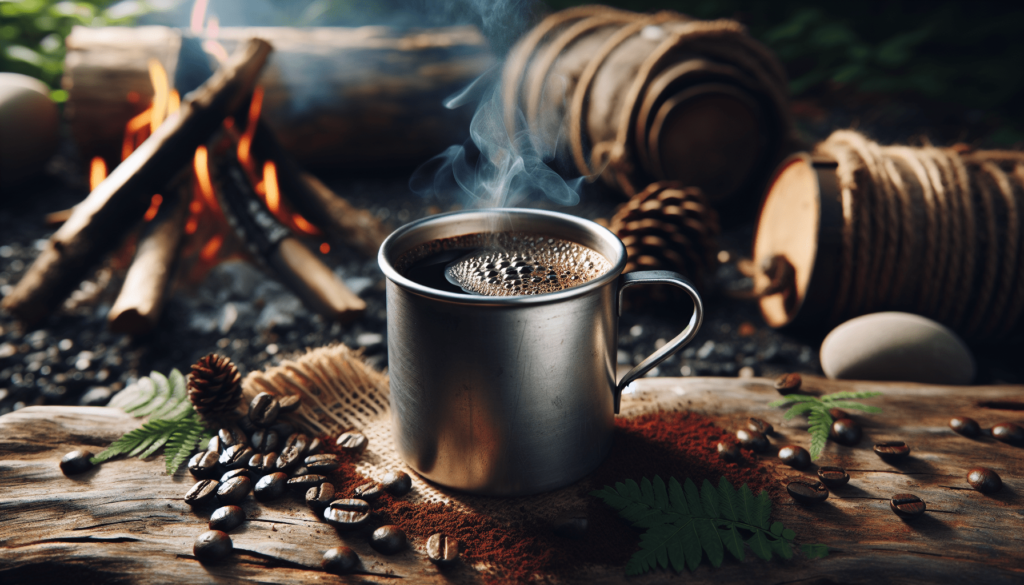Have you ever found yourself frustrated with the gritty grounds that settle at the bottom of your cup when making cowboy coffee? If so, you’re not alone. Cowboy coffee is a simple and classic way to make coffee, but getting those pesky grounds out of your drink can be a challenge. Luckily, there are several techniques you can use to make sure your cowboy coffee is as smooth and ground-free as possible.
Understanding Cowboy Coffee
Cowboy coffee is a traditional, rustic method of brewing coffee that doesn’t require any special equipment. It’s popular among campers, hikers, and anyone who enjoys the simplicity of making coffee over a fire. Understanding the basics of cowboy coffee will help you appreciate why grounds can sometimes be an issue and guide you on how to minimize them.
What You Need to Make Cowboy Coffee
To make cowboy coffee, all you need are a few basic ingredients and supplies. Here’s a quick list:
| Item | Description |
|---|---|
| Coarse coffee grounds | Coarse grounds are preferred as they settle better at the bottom. |
| Water | Fresh, cold water is ideal for a clean-tasting brew. |
| Pot or kettle | A metal or enamel pot that can be heated over an open flame. |
| Heat source | A campfire, portable stove, or even an open flame. |
Basic Cowboy Coffee Recipe
The process of making cowboy coffee is straightforward:
- Boil Water: Start by bringing your water to a rolling boil.
- Add Coffee Grounds: Remove the pot from heat and add your coffee grounds (about two tablespoons per cup of water).
- Stir and Let Sit: Stir the mixture and let it sit for a few minutes so the grounds can steep.
- Settle the Grounds: Allow the coffee to sit for a few more minutes to let the grounds settle at the bottom.
- Pour: Carefully pour the coffee into your cup, trying to leave the grounds behind.
Now that you know the basics, let’s explore ways to keep grounds out of your cowboy coffee.
Techniques to Reduce Grounds in Cowboy Coffee
There is no one-size-fits-all solution, but with these techniques, you can enjoy a smoother cup. Experiment with one or a combination of these methods to find what works best for you.
Use Coarse Coffee Grounds
One of the easiest ways to minimize grounds in your coffee is to use coarse coffee grounds. Finer grounds are more likely to remain suspended in the liquid, making it harder to avoid them when you pour. Coarse grounds, on the other hand, settle more quickly and stay at the bottom.
Why Coarse Grounds Work Best
| Grind Type | Advantage | Disadvantage |
|---|---|---|
| Coarse | Settles quickly, reducing grit | Less surface area for extraction, which might mean weaker coffee |
| Medium or Fine | More flavor extraction | More likely to remain suspended in the liquid, creating grit |
Add Cold Water
After your coffee has steeped, adding a small amount of cold water can help the grounds settle faster. The cold water causes the grounds to sink to the bottom, making it easier to pour clear coffee.
How to Add Cold Water
- Steep and Stir: Allow your coffee to steep and then stir it well.
- Add Cold Water: Gently pour a splash (about a tablespoon) of cold water into the pot.
- Wait: Let the coffee sit for another minute to allow the grounds to settle.
Use an Eggshell
An old cowboy trick involves using an eggshell to help settle the grounds. The proteins in the eggshell bind with the coffee grounds, weighing them down and making them sink faster.
Using an Eggshell in Cowboy Coffee
- Crush the Shell: Clean and crush an eggshell into small pieces.
- Boil and Add Grounds: Boil your water and add coffee grounds as usual.
- Add Eggshell: Add the crushed eggshell to the pot and stir.
- Let Settle: Allow the coffee to steep and settle before pouring.
Try a Coffee Sock or Cheesecloth
If you’re open to carrying an additional item, a coffee sock or cheesecloth can act as a filter. These items are lightweight, reusable, and can drastically reduce the amount of grounds in your coffee.
How to Use a Coffee Sock or Cheesecloth
- Prepare Sock or Cloth: Place the sock or cheesecloth in the pot before adding coffee grounds.
- Add Grounds and Water: Add your coffee grounds and water to the pot.
- Boil and Steep: Allow the water to boil and the coffee to steep.
- Remove Sock or Cloth: Carefully lift the sock or cloth out of the pot, leaving behind only the liquid coffee.
Allow for More Steeping Time
Giving your coffee more time to steep allows the grounds to settle more efficiently. This passive method requires a bit of patience but results in fewer grounds making it into your cup.
Ideal Steeping Time
| Wait Time | Benefit | Drawback |
|---|---|---|
| 4-5 minutes | Less gritty, smoother coffee | Requires patience |
| 2-3 minutes | Quicker, but more grounds | Some grounds may remain |
Pour Slowly and Carefully
When it’s time to pour your coffee, doing it slowly and carefully can make a significant difference. Sudden movements can stir up the settled grounds, making them more likely to end up in your cup.
Tips for a Smooth Pour
- Tilt the Pot: Hold the pot at a slight angle.
- Pour Steadily: Pour the coffee in a slow, steady stream.
- Stop Before the Bottom: Leave the last bit of coffee in the pot to avoid pouring any remaining grounds.
Use a Portable Coffee Press
Although it’s not traditional cowboy coffee, a portable coffee press like a French press can help filter out the grounds while keeping the rustic feel. You can carry a compact, lightweight French press during your outdoor adventures.
Steps for Using a Portable Coffee Press
- Boil and Steep: Boil water and add coffee grounds to the press.
- Let Steep: Allow the coffee to steep for about 4 minutes.
- Press Down: Slowly press the plunger down to separate the grounds from the liquid.
- Pour Coffee: Pour the filtered coffee into your cup.
The Salt Method
A lesser-known technique involves adding a pinch of salt to your coffee grounds. The salt helps the grounds clump together and settle at the bottom of the pot.
Using the Salt Method
- Mix Salt and Grounds: Add a pinch of salt to your coffee grounds before putting them in the pot.
- Boil and Steep: Boil the water and steep the coffee as usual.
- Allow to Settle: Wait a few minutes for the grounds to settle before pouring.
Strainer Method
Using a fine-mesh strainer can be a practical way to catch grounds as you pour your coffee. This method works well if you happen to have a strainer on hand during your outdoor escapades.
How to Use a Strainer
- Steep and Let Settle: Prepare your cowboy coffee as usual.
- Hold Strainer Over Cup: Place the fine-mesh strainer over your coffee cup.
- Pour Coffee Through Strainer: Pour the coffee slowly through the strainer to catch the grounds.
Decantation
Decanting coffee is a method used often in winemaking but works remarkably well for cowboy coffee too. It involves carefully pouring the coffee from one container to another to leave as many grounds behind as possible.
How to Decant Cowboy Coffee
- Prepare Coffee: Make your cowboy coffee and let it steep.
- Pour Slowly: Slowly pour the coffee from the pot into another container, leaving the grounds behind.
- Serve: Pour the now cleaner coffee into your mug from the second container.
Combined Methods for Best Results
Sometimes, using a combination of these methods yields the best results. For instance, using coarse grounds, allowing extra steeping time, and pouring through a strainer can together provide a ground-free cup of cowboy coffee.

Troubleshooting Common Issues
Even with these techniques, you might still encounter some common issues when making cowboy coffee. Here are some solutions to common problems:
Coffee Tastes Weak
If your cowboy coffee tastes weak, it might not have steeped long enough, or you might not be using enough coffee grounds.
- Increase Steeping Time: Let your coffee steep for an additional 1-2 minutes.
- Add More Grounds: Try adding another tablespoon of coffee grounds per cup of water next time.
Coffee Tastes Bitter
Bitter coffee can result from over-extraction or using water that’s too hot.
- Reduce Boiling Time: Let the water cool off slightly before adding the grounds.
- Steep for Less Time: Reduce the steeping time to 3-4 minutes.
Grounds Still in the Coffee
If you still find grounds in your coffee, you can always refine your technique.
- Check Coarseness: Ensure you’re using coarse coffee grounds.
- Try Multiple Methods: Combine techniques, such as adding eggshell, using a strainer, and pouring slowly.
Final Thoughts
Mastering the art of making cowboy coffee is all about practice and patience. By experimenting with these different methods, you’ll find the best combination that works for you. Whether it’s a relaxing morning at the campsite or a quick pick-me-up on a hiking trail, a smooth, ground-free cup of cowboy coffee is within reach. Enjoy the process and savor the simplicity and robust flavor of traditional cowboy coffee.

